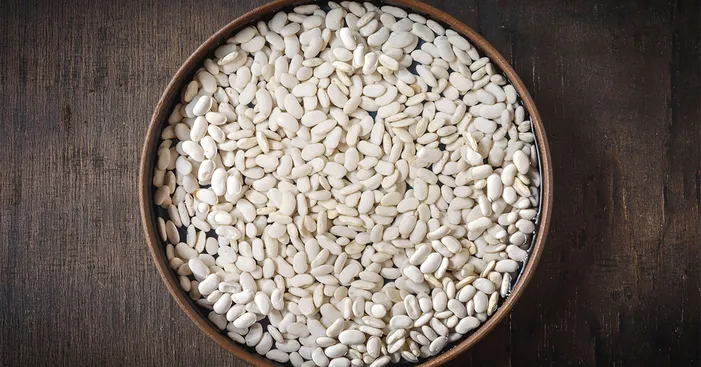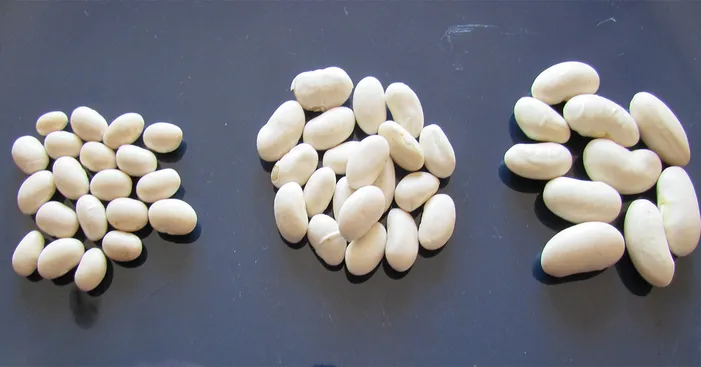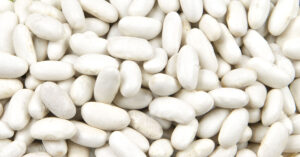Table of Contents

Move over, kale, and step aside, quinoa!
There’s a new nutritional powerhouse lurking in the depths of your pantry, waiting to be crowned the champion of your diet.
We’re talking, of course, about the humble Great Northern Bean.
Don’t let its unassuming appearance fool you.
These creamy white ovals pack a potent punch of health benefits, ready to transform your meals from good to great.
Think of them as tiny nutritional ninjas, quietly slipping into your dishes and boosting your well-being with every bite.
So, buckle up, food adventurers, because we’re about to embark on a journey into the hidden world of the great northern bean.
We’ll crack open its secrets, explore its nutritional riches, and discover how these little gems can revolutionize your health and your taste buds.
Get ready to be amazed, be informed, and maybe even a little bit bean-spired.
Because by the end of this article, you’ll never look at a can of great northern beans the same way again.
General facts about Great Northern bean:

History:
Born in the sun-drenched tropics of South and Central America, the Great Northern Bean, a humble legume, has embarked on a remarkable journey across the globe.
Flourishing in warm and temperate zones, it conquered Europe, birthing a tapestry of local cultivars.
Across the eastern expanse of Africa, it found a second home in the highlands of Tanzania, Uganda, and Kenya.
The Andean echoes resonated in these landscapes, welcoming the bean with open arms and allowing it to take root.
However, the steamy jungles of tropical Asia proved an insurmountable challenge.
There, the throne belonged to other legumes, like lablab and mung beans, better attuned to the equatorial symphony.
And so, the Great Northern Bean’s odyssey continues, forever marked by its triumphs and surrenders in the grand story of adaptation and migration.
Overview:

The humble common bean, an annual resident of gardens and kitchens worldwide, comes in two distinct growth styles: climbers and bush dwellers.
Climbing beans, also known as pole beans, reach for the sky with their twining stems, while bush beans prefer a more compact, upright life.
There’s even a happy medium between the two, for those who like flexibility in their greenery.
These beans don’t stop at variety when it comes to character.
Their fruits, called pods or cosses, come in a kaleidoscope of shapes and sizes.
Imagine pods ranging from plump ovals to sleek cylinders, or even flat pancakes – all hiding treasures within.
Each pod cradles a precious handful of seeds, four to eight on average, like tiny jewels in a velvet case.
Their shapes echo the pod’s diversity, with kidney-shaped being the most common, but smooth circles also gracing the garden stage.
So, from climbing vines to hidden gems, the common bean is a plant teeming with botanical intrigue.
Cannellini vs Great Northern Bean:

Nutritional values:
While both cannellini and great northern beans pack a punch of protein and calories (around 8 grams and 110-118, respectively), great northern beans take the crown for fiber content.
With 7 grams per serving compared to Cannellini’s 5, they’re a champion for digestive health.
But don’t worry, both varieties are brimming with antioxidants and essential minerals like potassium, iron, and magnesium.
So, whether you choose creamy cannellini for its hearty texture or versatile Great Northern Bean, adding them to your meals is a win-win for your body and the planet.
Go forth and embrace the beautiful benefits!
Taste:
Though readily available in both canned and dried forms across the U.S., cannellini and great northern beans, both members of these bean species, hail from their ancestral home in South America.
While both are small- to medium-size white beans, their culinary destinies diverge based on their inherent qualities.
Its thicker skin and bolder flavor make it a star in robust soups and stews, while the great northern’s “delicate” nature shines in dishes where a lighter touch is desired, be it a simple bowlful, a baked good, or anything seeking a subtler bean character.
So, next time you’re at the grocery store, remember: cannellini for bold, great northern for gentle, and both for adding a versatile, nutritious punch to your culinary creations.
Great Northern Bean nutritional values and health benefits:

Nutritional values:
Packed with a nutritional punch, the common bean AKA “Great Northern bean” is a treasure trove of protein, fiber, and other essential nutrients.
About one-fifth of their weight comes from a protein called phaseroline, while cholesterol, lecithin, and pectic matter add to their well-rounded profile.
They’re also a good source of fats, sugars like stachyose and sucrose, the amino acid tryptophan, phosphatide, and a complex carbohydrate called galacto-araban.
And don’t forget about the good carbs – plenty of pentosans and legumin are there to keep you fueled.
Health benefits:

Great Northern Beans are nature’s hidden gems, packed with a surprising amount of health benefits.
They offer much more than just a delicious addition to your next dish.
Let’s delve into their magic:
An asset against bloating:
Feeling bloated? Great Northern Beans act as a gentle diuretic, helping your body flush out excess water.
This superpower proves useful for treating kidney issues, water retention, edema, and even blood pressure fluctuations.
For those struggling with urinary problems or gout, Great Northern Beans can also lend a helping hand.
Relieves arthritis pain:
If rheumatism, arthritis, or joint pain are giving you the blues, Great Northern Beans come to the rescue.
Their mild anti-inflammatory properties, boosted by the presence of silica, bring relief and soothe those aching joints.
Regulates bowel movement:
Happy You: Feeling sluggish? Great Northern Beans act as a natural laxative, thanks to their high fiber content.
They gently regulate your intestinal transit, bidding farewell to occasional constipation and promoting a smooth journey for your food.
Great ally against diabetes:
Sugar Smoother: Worried about blood sugar spikes?
Great Northern Beans are your new best friend.
Their high cellulose fiber and tannin content helps regulate blood sugar levels and slow down the absorption of carbohydrates and fats.
This makes them a great ally for diabetics or those simply looking to keep their blood sugar in check.
Weight-Loss Warrior:
Looking to shed some pounds or maintain a healthy weight?
Great Northern Beans are in your corner.
Their low-calorie count, combined with the satiating power of fiber and tannins, keeps you feeling full and helps manage your weight effectively.
Full of antioxidants:
Great Northern Beans are also packed with antioxidants like vitamins A and C, acting as a shield against harmful free radicals.
This translates to a lowered risk of cardiovascular disease and keeps your body feeling young and vibrant.
Precautions before you consume Great Northern bean:

While the Great Northern bean boasts undeniable culinary appeal, overindulging this delicious bean can spell trouble for your tummy.
Digestive discomfort and nausea might become unwelcome dinner guests, and ironically, constipation could also join the party.
But before you swear off these beans forever, remember that the culprit behind these woes resides in raw beans – a toxic substance called phaseolin that thankfully gets kicked out during cooking.
However, if your intestines are already grappling with inflammation, best give Great Northern Beans a wide berth, as it might further agitate your gastrointestinal woes.
As a general rule of thumb, pregnant and breastfeeding women should also exercise caution when it comes to these beans.
So, enjoy them in moderation, cook them thoroughly, and listen to your body – it’ll thank you for it.
Using Great Northern Bean:

Great Northern beans, not to be left out of the global bean party, dance across culinary borders with grace and flavor.
In France, these delicate beans accompany the robust grandeur of roast lamb, while rustic cassoulet embraces dried great northern beans and vibrant green cabbage in a southwest symphony.
Turkey sways to the rhythm of kuru fasülye pilav, where these beans and rice become a harmonious medley.
Belgium, meanwhile, gives the common beans potée a twist, twirling it with potatoes and bacon in the charming Liège salad.
Across the Atlantic, America gets saucy with creamy common bean casserole, a celebration of great northern beans, onions, and smooth indulgence.
North Africa joins these beans ballet with loubia, a thick soup where common beans pirouette with a fiery touch of chili pepper.
Tuscany, Italy, brings a hearty flair with ribollita, a twice-reheated vegetable extravaganza where dried common beans waltz with sliced bread, ham bones, savoy cabbage, and lean bacon.
From delicate whispers to bold stomps, these bean-centric dishes demonstrate the versatility and cultural significance of this humble legume on the world stage.
Cosmetic usage:
The humble kidney bean, known scientifically as the Great Northern Bean, may hold more beauty secrets than we thought.
Recent research investigated the potential of an extract from these common beans for improving skin health.
The extract, rich in antioxidants, is believed to have moisturizing, smoothing, and brightening effects, while also helping to prevent wrinkles.
To explore these claims, the researchers created a stable, oil-in-water emulsion containing the Great Northern Bean extract.
This emulsion dubbed the “active formulation,” was compared to a placebo version lacking the extract.
Both formulations were tested for stability over 28 days under various storage conditions.
Interestingly, both the active and placebo formulations remained stable, showing no signs of separation, liquefaction, or color change.
This suggests that Great Northern Bean extract can be readily incorporated into beauty products without compromising their shelf life.
However, the study went beyond simply assessing stability.
Volunteers applied the formulations to their cheeks for eight weeks, allowing researchers to observe any direct effects on the skin.
While the results of this skin trial are not yet fully disclosed in the provided text, it hints at potential changes in skin parameters, suggesting the extract may indeed offer some of the skin-boosting benefits previously hypothesized.
Further research is needed to fully understand the efficacy of Great Northern Bean extract for topical skin care applications.
However, this initial study paves the way for future exploration of this natural source of antioxidants and its potential to enhance skin health and beauty.
Storing Great Northern Bean:

Fresh beans:
Fresh Great Northern Beans are surprisingly delicate, but with a little know-how, you can stretch their lifespan in the fridge.
For up to four days, simply tuck them into the crisper drawer unwashed and whole.
However, if you anticipate needing them later or notice any surface dampness, a simple trick can buy you an extra couple of days.
Gently clean the beans with a dry cloth or paper towel (avoiding water as it can hasten spoilage).
Next, lay them on a fresh sheet of paper towel, which will wick away any lingering moisture that could encourage mildew.
Wrap them loosely in the towel and snugly tuck them into an airtight bag, squeezing out as much air as possible.
The drier environment within the bag and the moisture-absorbing towel will create a microclimate that extends their shelf life for up to a week.
Now, relax and enjoy the crisp bounty of your Great Northern Beans knowing they’ll be fresh and ready when you need them.
Dry beans:
Preserving the goodness of dried Great Northern beans for long-lasting flavor requires choosing the right storage solution.
But it’s not just about finding any container – understanding their role in protecting your beans is key.
Let’s start with defense: humidity, dust, and unwelcome insects are the enemies.
This means airtight jars with secure lids become your best allies.
But fret not about sunlight, as these dry champions aren’t light-sensitive.
So, transparent containers become a viable option, offering easy access and organization right on your shelves or counters.
Plus, with a glance, you’ll always know what bean brigade awaits for culinary adventures.
But material matters! Plastic jars, while convenient, can be treacherous allies.
Previous occupants may leave behind unwelcome scents that cling to your beans.
Glass, on the other hand, shines as a pure and odor-resistant partner.
Bonus points for its dishwasher-friendly nature, allowing you to swap out and refill with ease, leaving no trace of prior bean residents.
Remember, dry foods like beans have a knack for needing ample space.
So, when choosing your glass jars, think big – wide or elongated beauties depending on your kitchen’s storage landscape.
